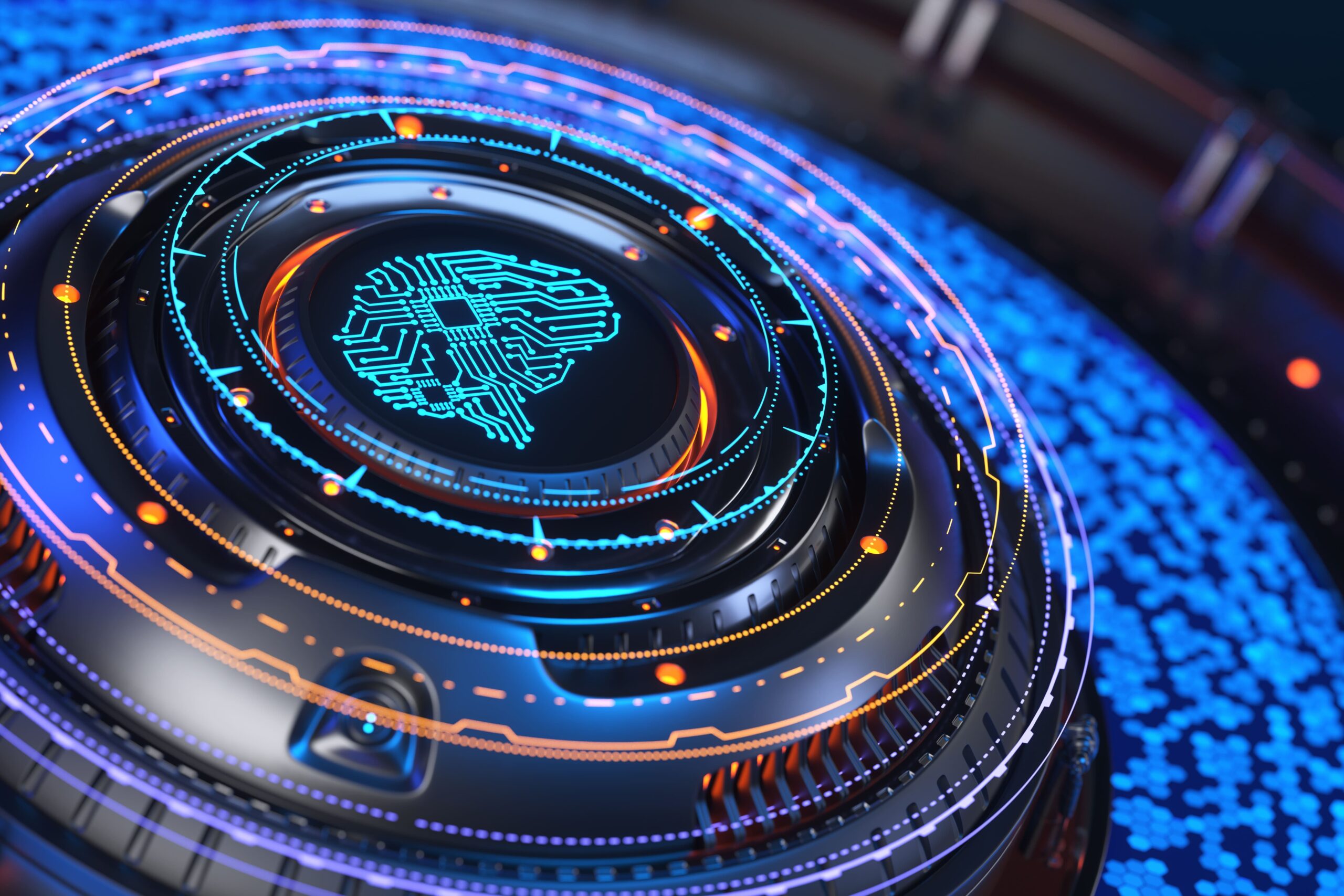Artificial intelligence is becoming more and more commonly used in radiology, and there are several reasons why this is the case. One of the main benefits of artificial intelligence is that it can be used to improve the accuracy and efficiency of radiology reporting. This means that radiologists will have more time available for other tasks, which in turn means that they will be able to spend more time with their patients. Artificial intelligence also reduces costs and improves patient care by reducing errors caused by human error.
Artificial intelligence has been used for many years now as part of a healthcare system, but it is only recently that it has been applied to radiology. One of the main reasons for this is because radiology reports are considered highly sensitive information and it was felt that using artificial intelligence would compromise patient confidentiality. However, this is no longer an issue thanks to advances in technology which make it possible to keep patient data confidential while still allowing artificial intelligence systems access to medical records.
What is AI and what are its benefits in the medical field?
A radiology image is a series of images taken from the same point of view. When you look at an image with a computer, you are seeing it from a different perspective. This creates a different kind of information than you would get looking at the same image without a computer.
What is AI? An artificial intelligence (AI) program is any computer program that can be programmed to achieve certain tasks and achieve them in extremely high quality. These tasks may include solving problems, recognizing objects, doing geometry calculations, answering questions, or performing other functions using data and statistical analysis.
There are many types of AI programs used in radiology:
- Expert systems: These are programs that have been trained to perform specific tasks, such as medical imaging interpretation. They are often used for interpreting X-ray images and patient histories by determining if some patient has lead poisoning or other potentially hazardous conditions. They also assist radiologists when interpreting CT scans and mammography scans to determine if cancerous growths (benign or malignant) have occurred in the breast tissue. Expert systems are often used to assist radiologists during mammography examinations by identifying tumors on the mammogram images and then providing information about the size of each tumor to radiologists during their discussions with patients about the results of their mammograms. Experts can be trained with various types of data including mammogram images from over 200 hospitals across North America as well as detailed information about breast cancers from over 1 million women worldwide.
- A computer algorithm is another type of AI program that can be used for specific tasks within radiology rather than being trained specifically for radiologic imaging interpretation tasks like expert systems as well as performing general medical imaging tasks like segmenting an organ into its structural parts for diagnosis purposes. With these two types of programs together it becomes possible for a radiologist to do everything from recommending an individual risk factor for developing prostate cancer to assisting radiologists during mammography examinations by identifying tumors on the mammogram images and then providing information about the size of each tumor so that radiologists can better discuss with patients what they have seen on their mammograms regarding their results regarding their results regarding their results regarding their results.
Not all AI programs will be considered experts since they may not know everything there is to know about every single human being on earth who has ever lived! But these computers aren’t just limited to clinical imaging applications like expert systems do but they also perform much more general medical imaging tasks such as segmenting an organ.
How can AI be used in radiology specifically?
While AI has been used in numerous fields, it is most commonly found in artificial intelligence (AI) and machine learning.
Radiology, in particular, has seen an exponential increase in the use of AI and machine learning.
AI can be used for many things in the medical field, but one of its most exciting applications is in radiology, the use of computers to assist with radiologic image interpretation tasks.
Radiology is the branch of medicine that deals with the diagnosis and treatment of diseases using imaging technologies such as X-rays, magnetic resonance imaging (MRI), computed tomography (CT) scans, ultrasound and nuclear medicine. Radiologists are experts who interpret these images and make a diagnosis based on their findings.
There are two main approaches when it comes to using AI systems to assist radiologists: deep learning and rule-based systems. Deep learning systems use artificial neural networks that can learn automatically from data without being programmed by humans. Rule-based systems use rules created by humans to guide AI decision making.
The power of AI is that it allows radiologists to quickly review images and make decisions from large sets of data without needing to have a special knowledge or skill set. The power of machine learning is that it can learn from experience, thus making them better at their jobs even after repeated practice.
What are some of the challenges that need to be addressed before AI can be widely used in radiology?
Radiology is a highly technical field that requires a lot of skill and expertise. Computers do not have the ability to interpret radiologic images without human help, which means they are useless in many cases.
There are several challenges that need to be addressed before AI can be widely used in radiology.
- First, radiology is a highly technical field that requires a lot of skill and expertise. Computers do not have the ability to interpret radiologic images without human help, which means they are useless in many cases.
- Second, the data sets for machine learning are often too small for reliable results. This means that even if you have access to a computer that is capable of interpreting radiologic images and diagnosing diseases, it will not be able to do so reliably because there aren’t enough examples available for it to learn from.
- Thirdly, medical imaging technologies such as MRI machines and CT scanners are expensive and typically require specialized training to operate properly. But there are companies, like Fujifilm that are changing this challenge.
However, advances in AI and machine learning are making radiology a more inviting field for these machines to work in. Many radiology assistants are reluctant to give up their jobs because it is one of their main sources of income. In order for these machines to be used routinely by doctors, they need to be allowed into the operating room where they can do their job without human interference.
The biggest challenge for AI in radiology is that doctors don’t want to give up control over their patients. They are concerned about the potential legal risks associated with using AI systems that may cause harm to patients or fail to catch something important during a medical procedure. In addition, doctors worry about being replaced by machines, which is why most hospitals have policies against the use of robots inside operating rooms.
What impact could AI have on the field of radiology?
The application of artificial intelligence (AI) in medical image processing has been revolutionizing the field for years. AI is a technology that can be used for many things in the medical field, but one of its most exciting applications is in radiology—the use of computers to assist with radiologic image interpretation tasks.
Radiology is a branch of medicine that uses imaging tests such as X-rays, CT scans, MRIs and ultrasounds to diagnose and treat medical conditions. Radiologists are doctors who specialize in interpreting images created by these tests, so they’re responsible for making critical decisions about patient care based on their findings.
The ability for an AI system to assist radiologists with this task would be huge, not only could it help improve accuracy and speed up diagnosis times, but it could also reduce human error and improve patient outcomes.
AI can analyze millions of images very quickly and provide doctors with more accurate results. Radiologists are already able to interpret digital images at speeds of up to 20 frames per second with current devices, but the goal is far higher. Radiologists want to be able to use AI-powered radiology systems that are capable of simultaneously searching through millions of images and analyzing their content, while still providing physicians with more accurate results than they currently get.
The use of AI in radiology is also beneficial for patient care because it increases quality and decreases time spent on radiologic tasks or examinations. The applications listed above prove this point: using AI-powered radiology systems that are capable of simultaneously searching through millions of images and analyzing their content, while still providing physicians with more accurate results than they currently get.
How will AI change the way doctors diagnose and treat patients?
Radiology is an all-encompassing field of medicine, focused on the diagnosis and treatment of diseases. Radiology is a specific sub-specialty, that uses X-rays to help doctors identify and treat diseases by examining certain structures within the body.
In the past, radiology was performed using film which needed to be developed in a dark room for several minutes before being able to see the images. It wasn’t until digital imaging technology became available that doctors were able to view their results instantly. Nowadays, most radiological findings are obtained using computed tomography (CT) scans or magnetic resonance imaging (MRI) scans. These scans can help detect cancerous tumors, fractures, heart disease and many other conditions that would otherwise go undetected. The results of these tests are then sent to a radiologist who will read them and make recommendations based on what they see in the images.
Radiologists must have extensive training in order to perform their job effectively because they need to understand what each different type of scan means and how it relates back to specific diseases or conditions
The reason why AI can be an amazing tool for radiologists is because it allows them to process large volumes of data at lightning speeds. In the past, radiologists have had to rely on other tools like a computer to process images and make diagnoses.
But with AI, they don’t need any additional tools or software. They can export the data from the images and perform their analysis with just a few clicks on their computers. The end result is better diagnoses and treatments for patients who are suffering from different kinds of illness and injuries.
I was inspired to write this article after my conversation with Ian Weissman, Physician and Patient Advocate, Health Equity and Wellbeing Champion. Ian is a Radiologist at the Milwaukee Veterans Affairs Medical Center and Family Centred Care Outreach committee and President of the Wisconsin Radiology Society. In this episode, we talked about Health Equity , AI in Radiology and Physician Burn out in #Healthcare.
Watch Episode #67 of Digital Health & Wearables Series:
Contact us for more relevant details. To find out more about how we can help you with your Digital Healthcare Transformation, Healthcare organizational growth, or Healthcare brand positioning, please get in touch via phone +44 (0) 203 3620421 or via e-mail: info@digitalsalutem.com





